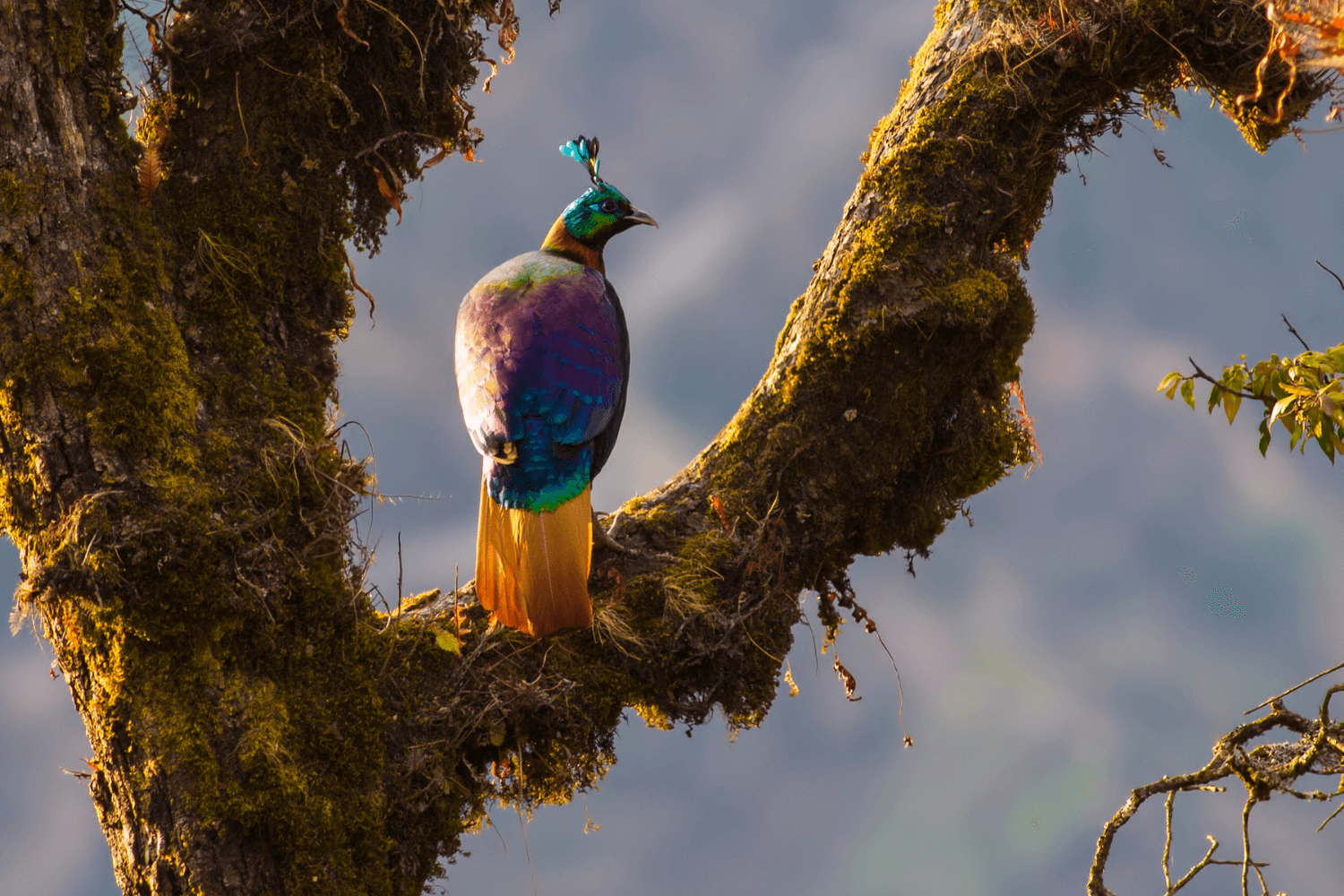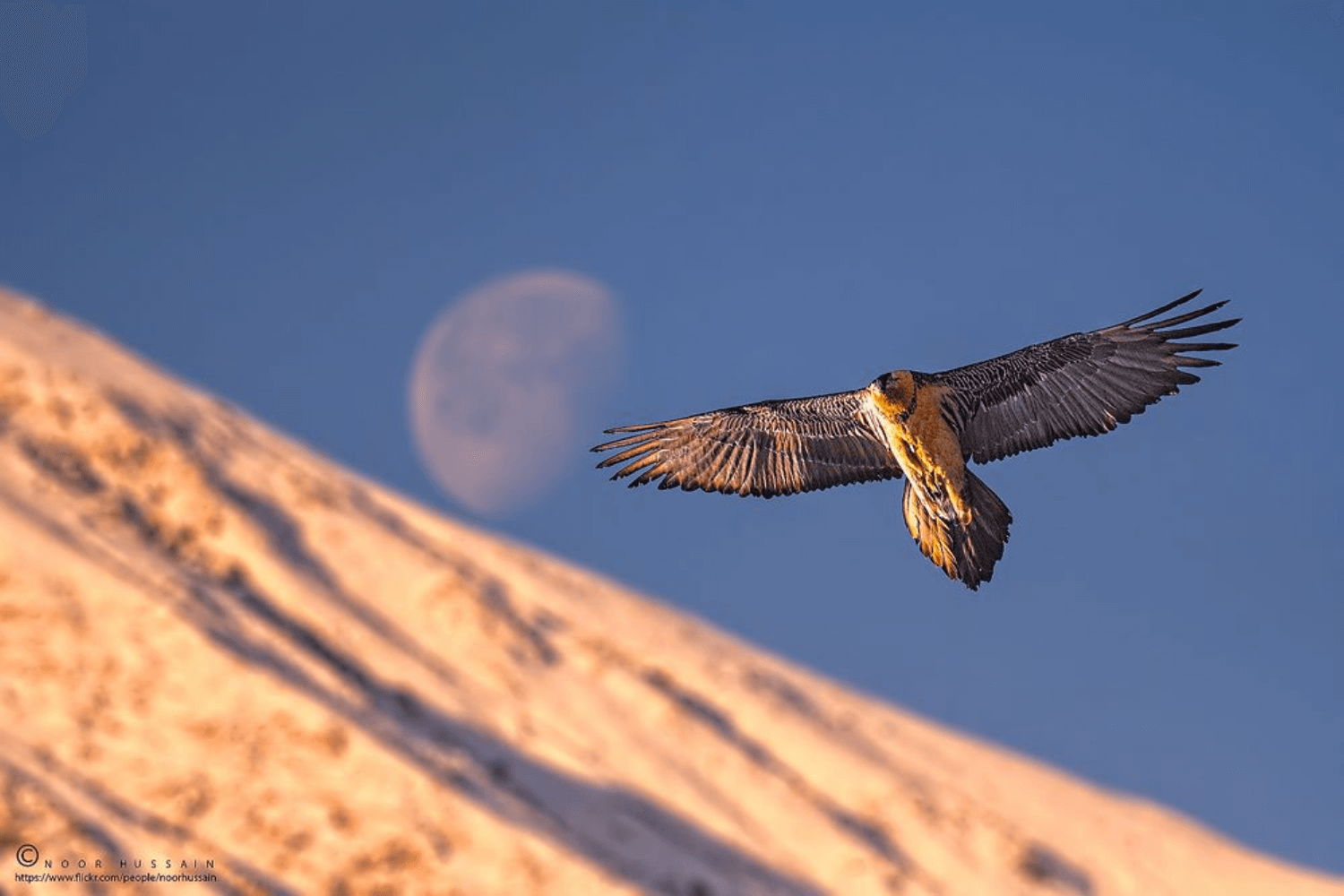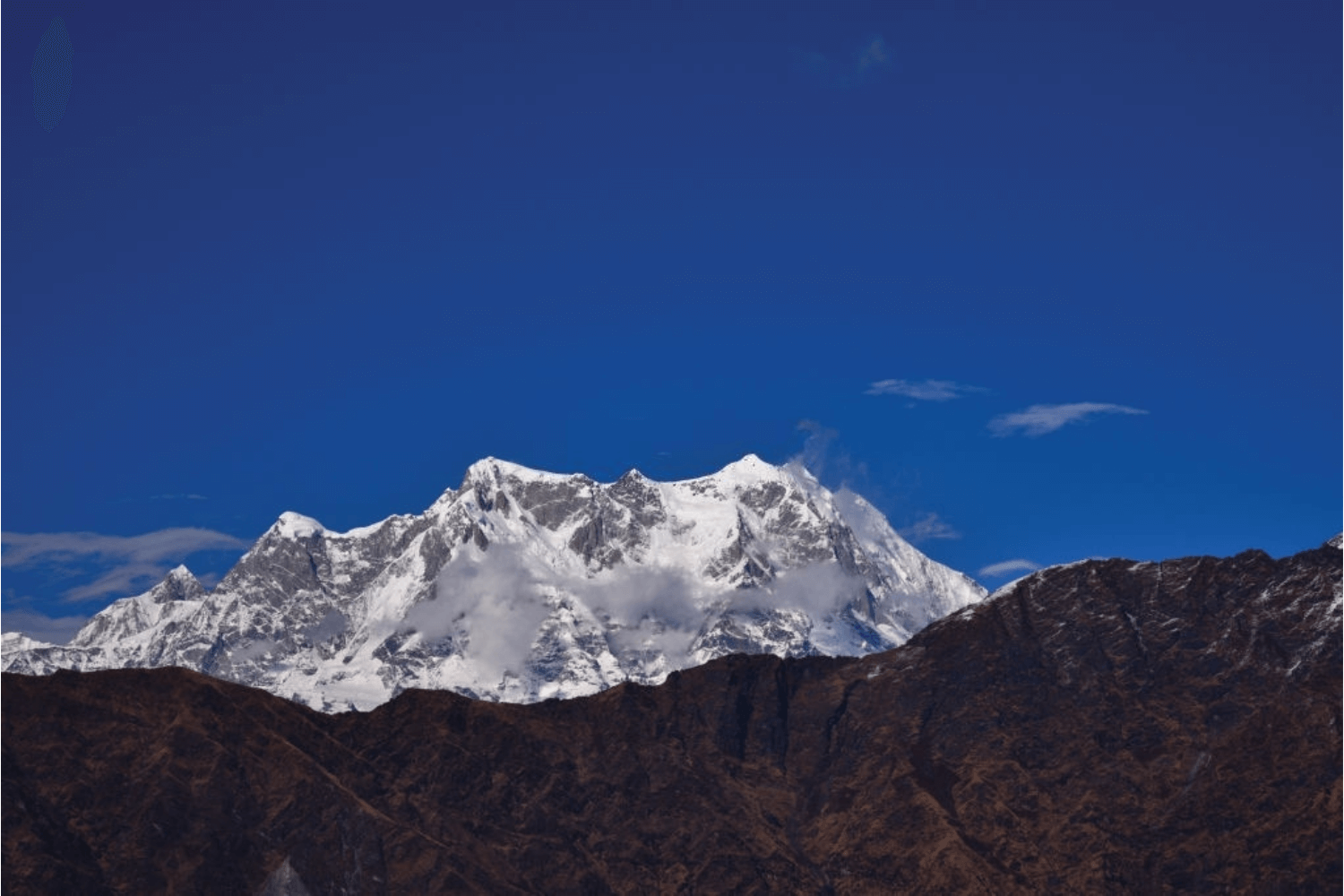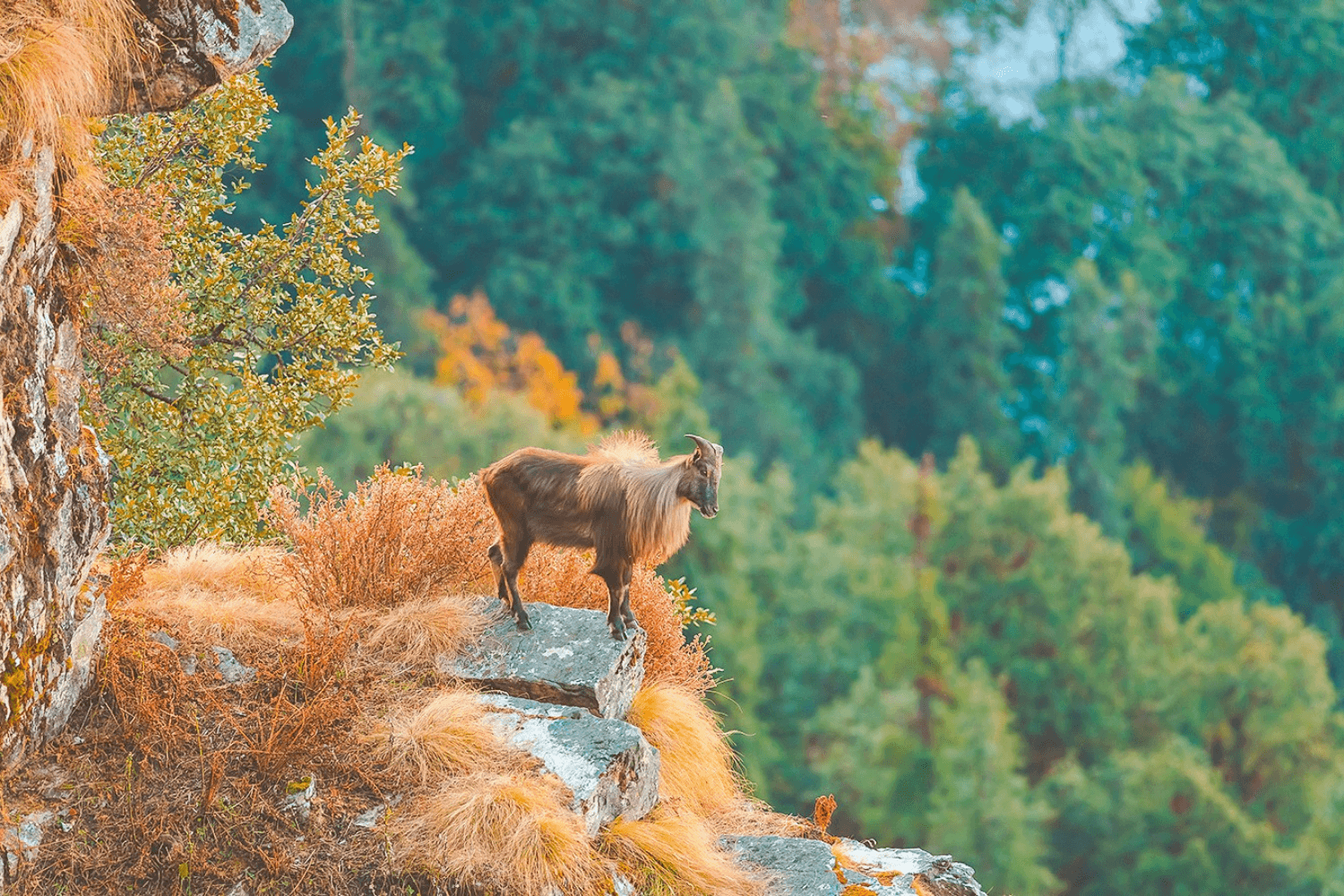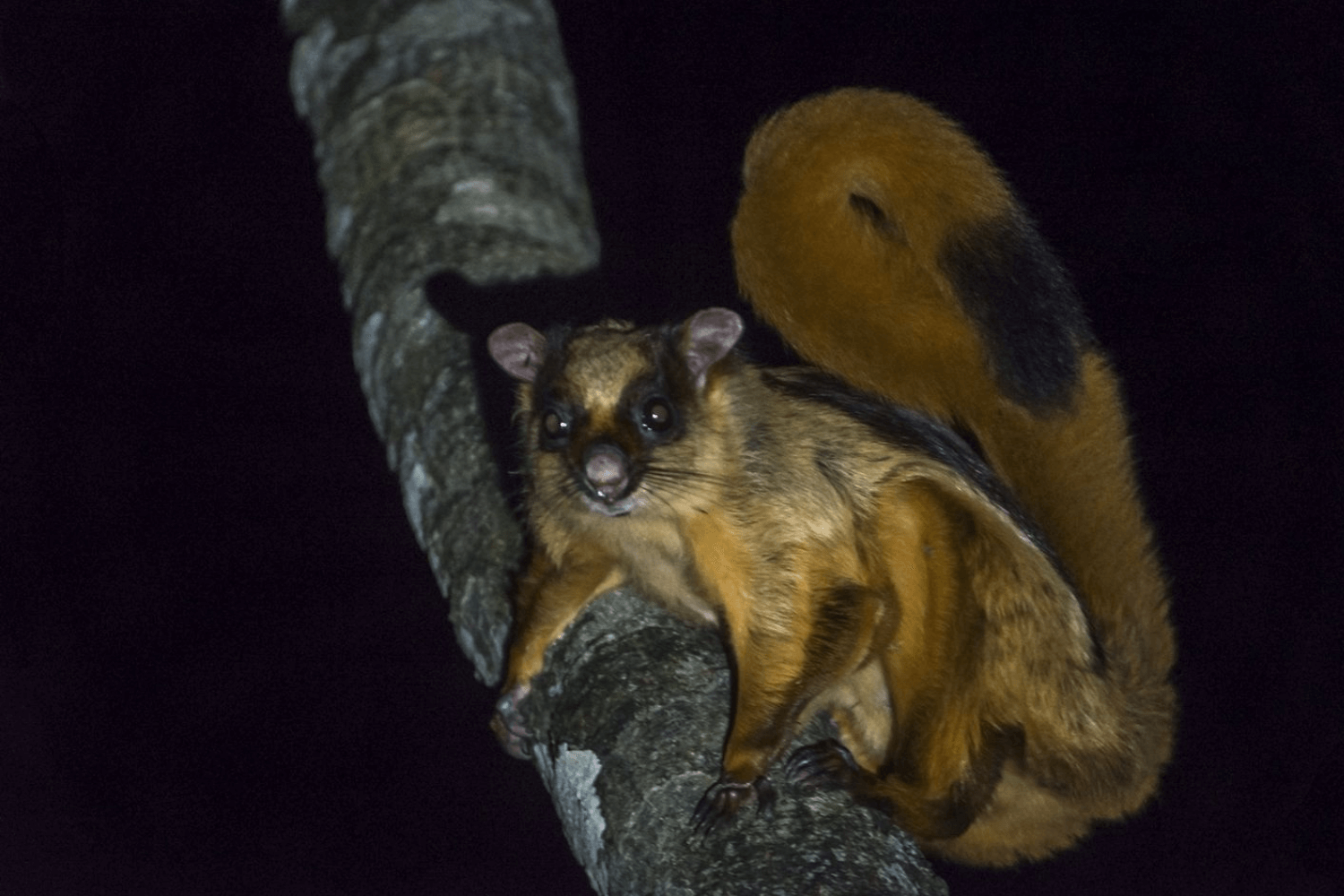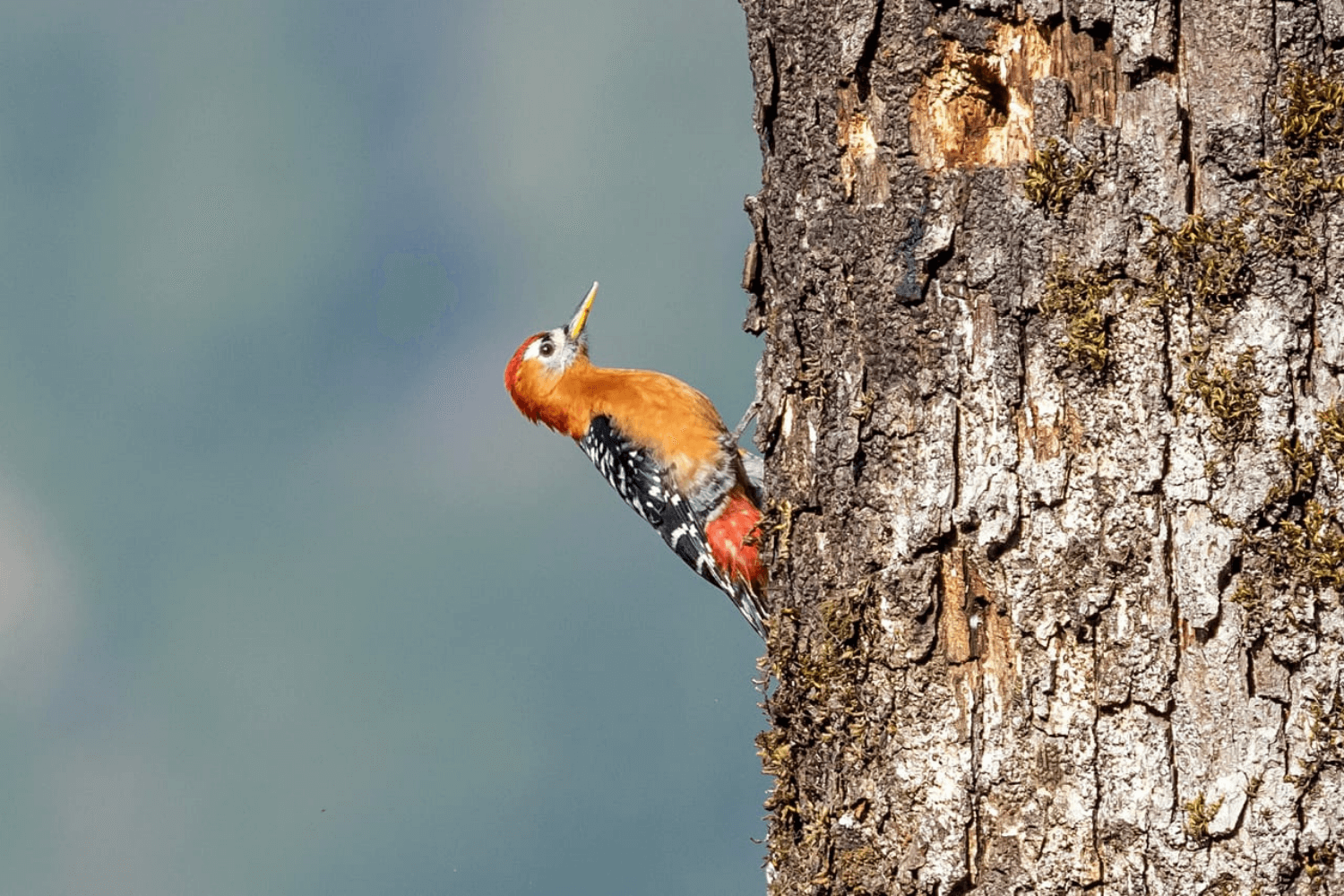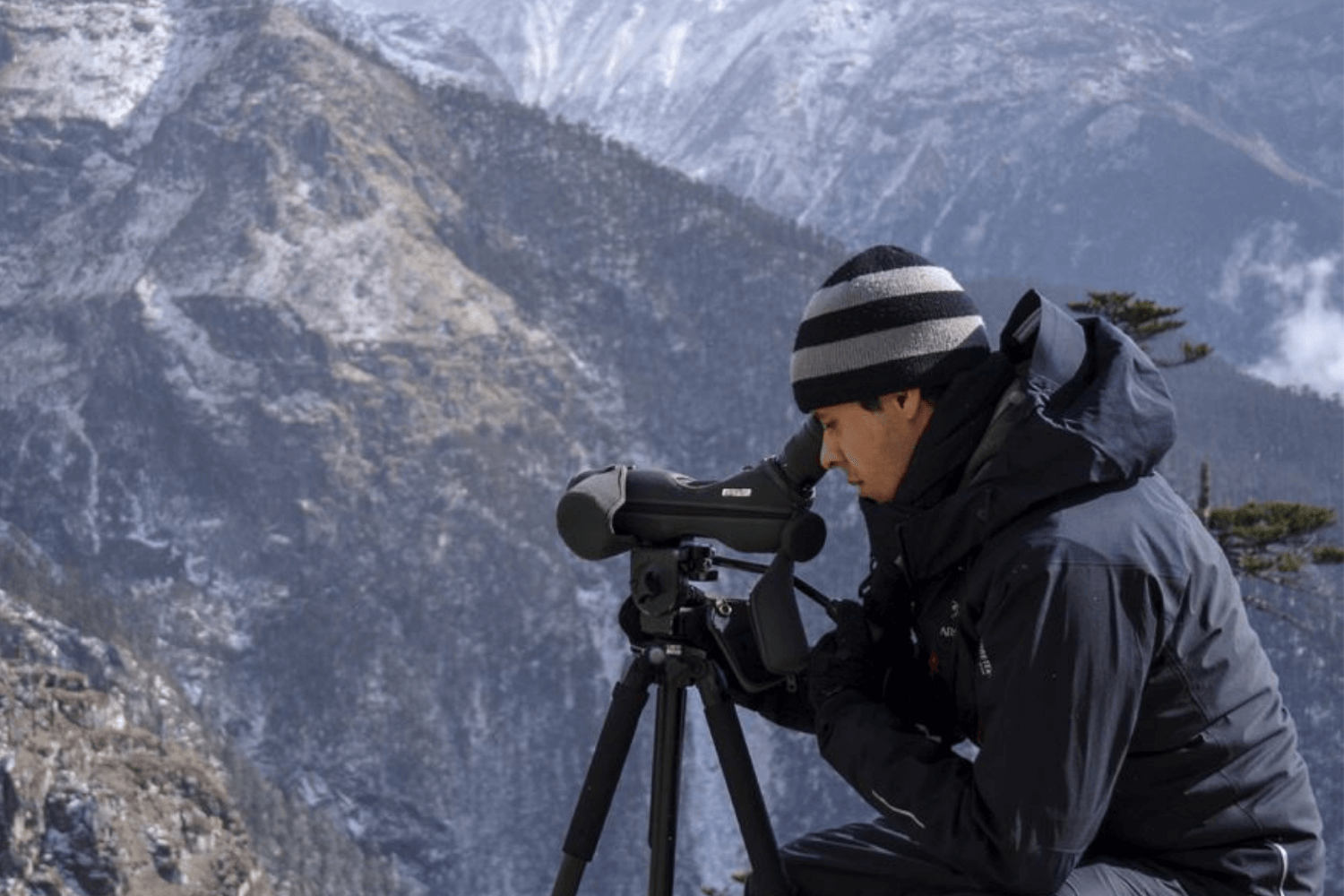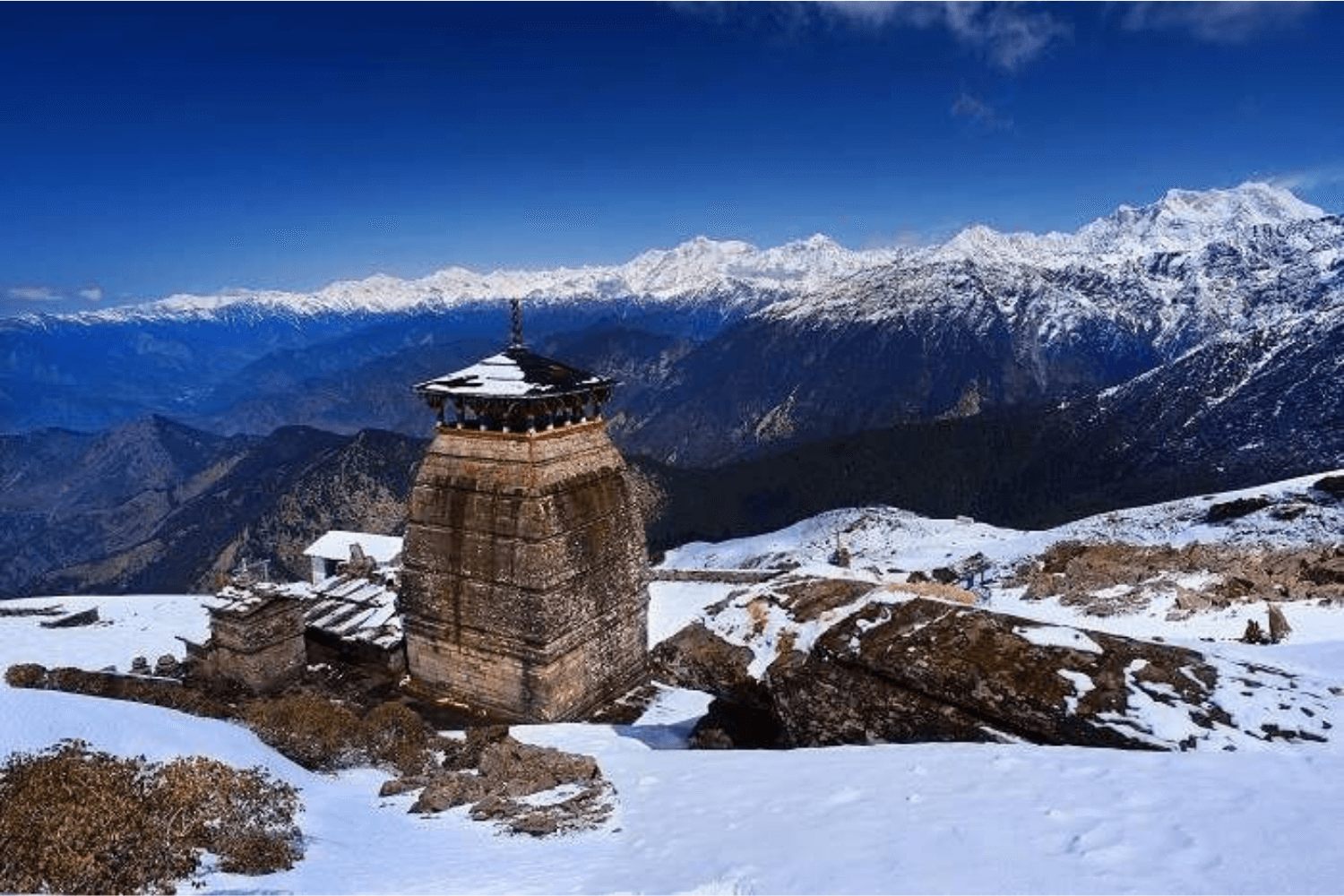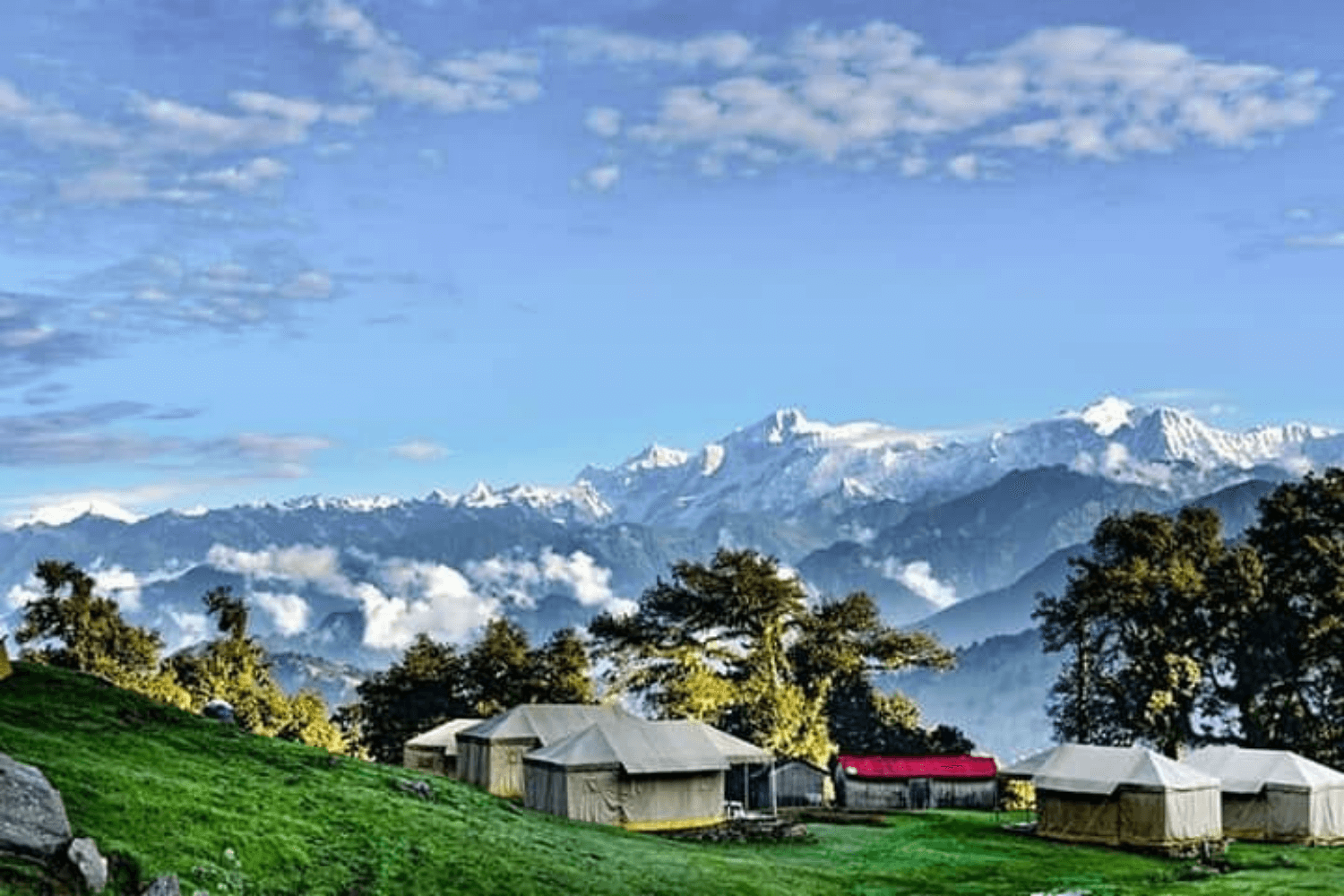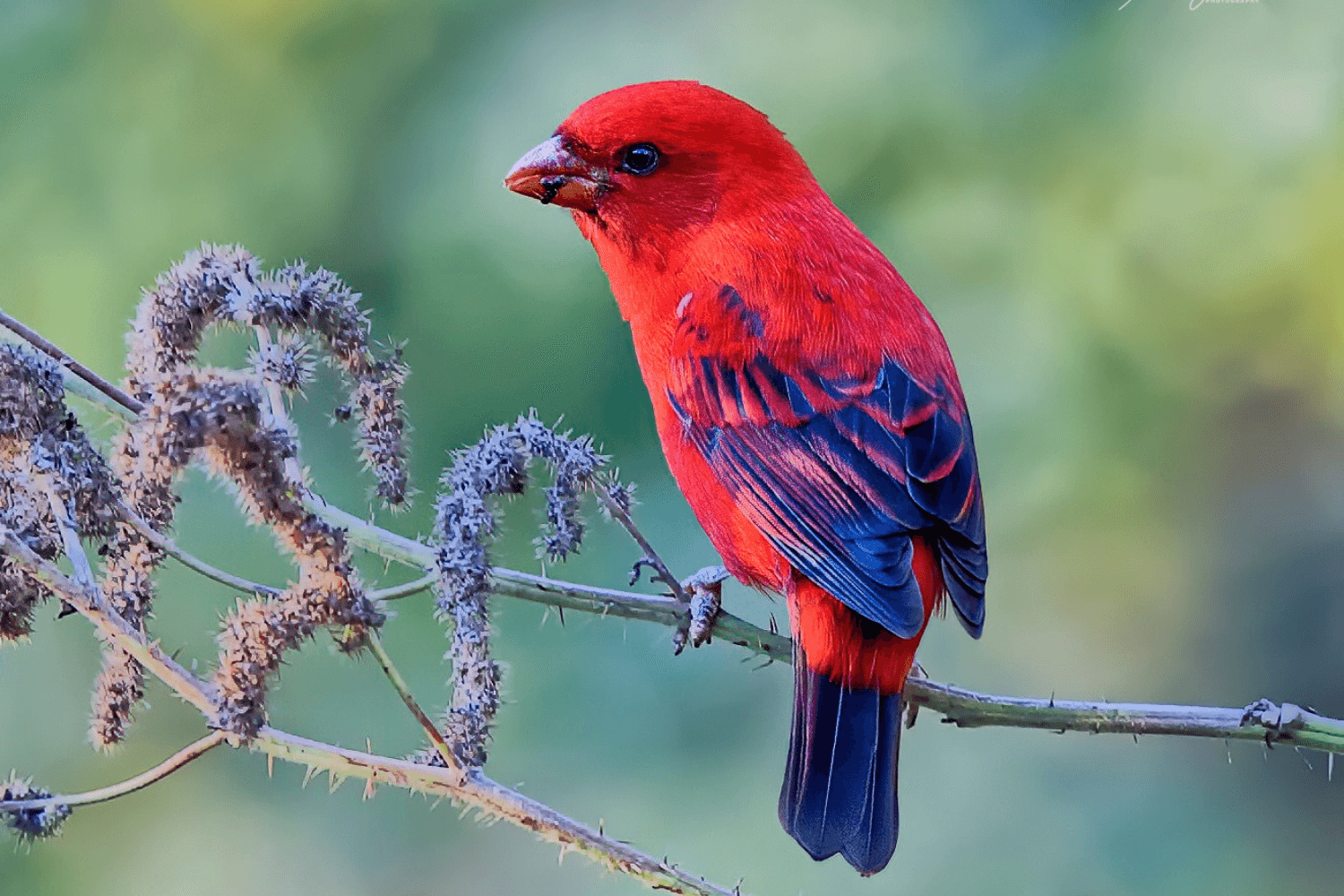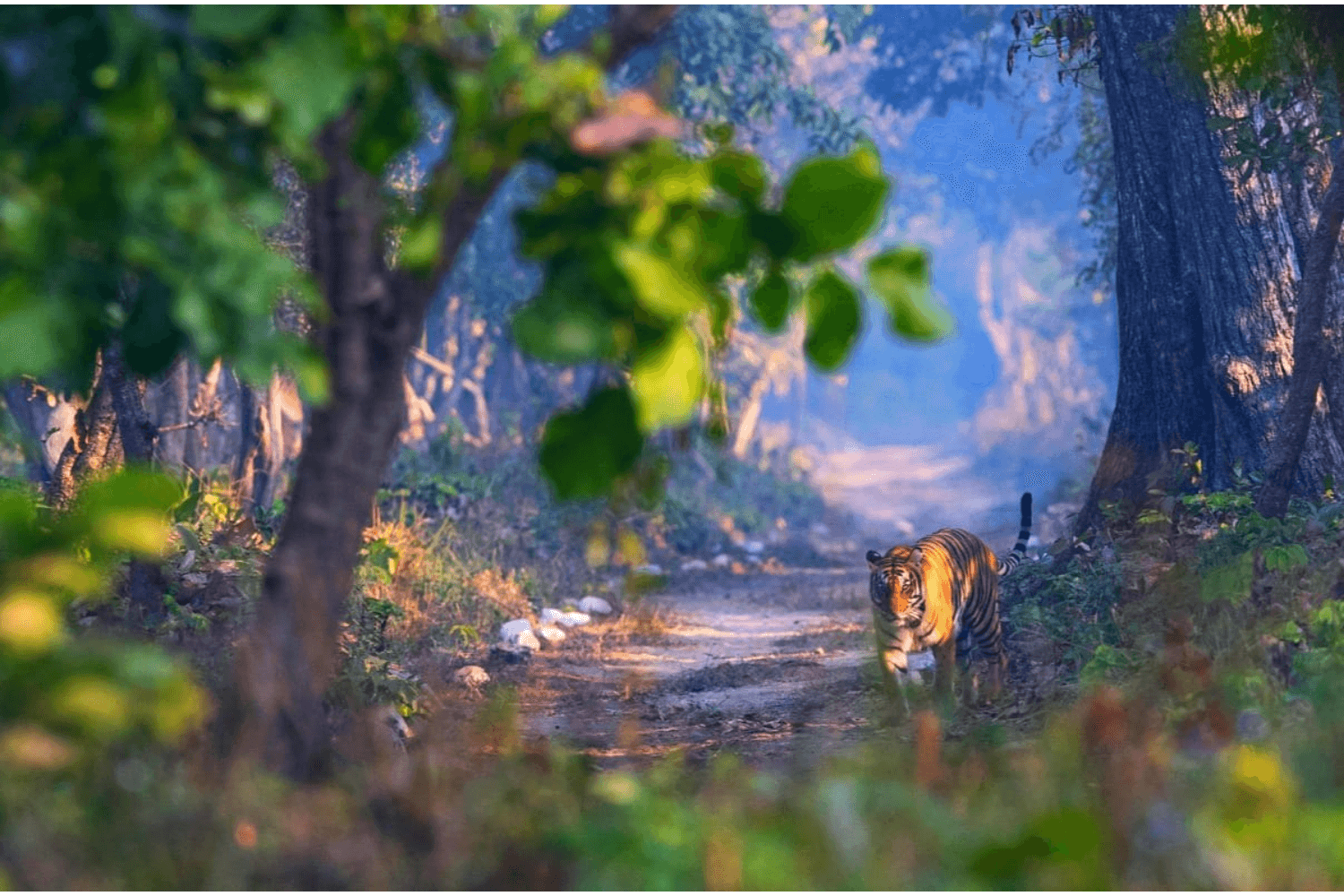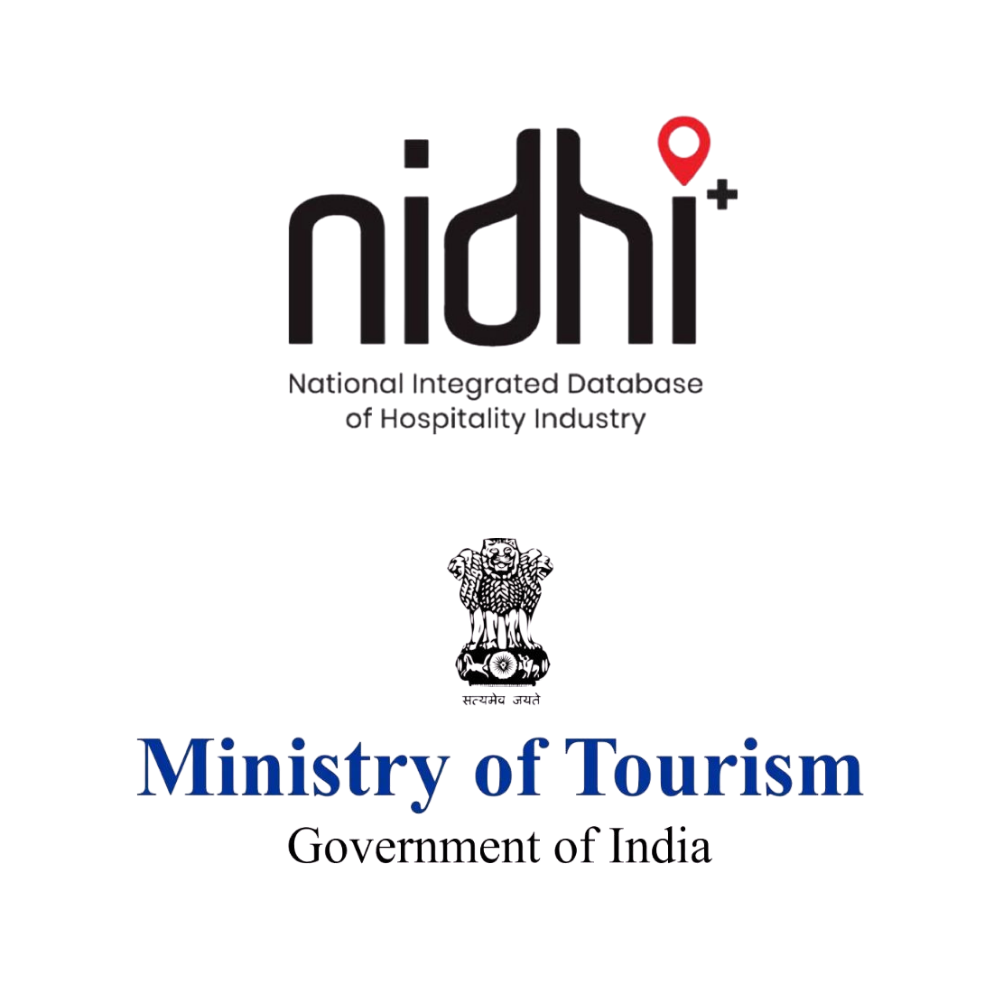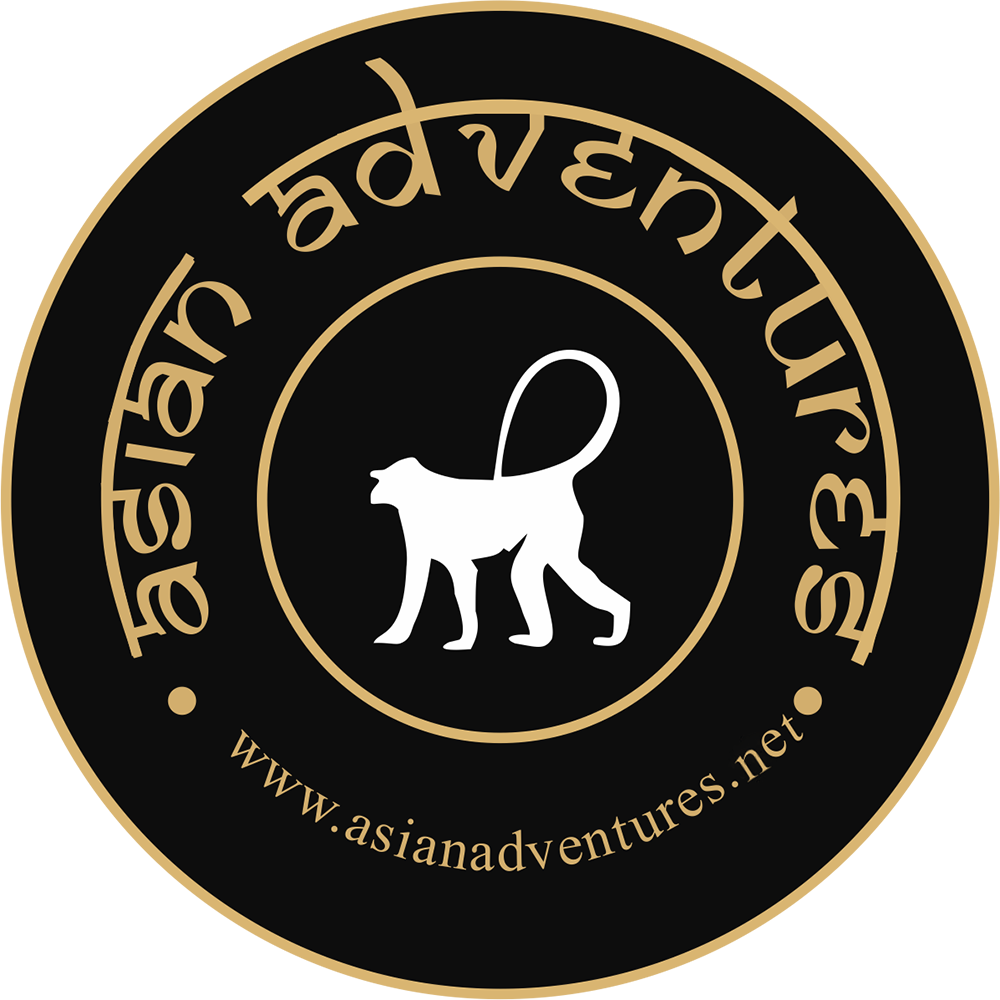Overview
The Garhwal Himalayas of Uttarakhand denotes mainly the westernmost region of the state of Uttarakhand. In ancient times, this rugged mountain region was home to many forts or ‘garhs’ which were then conquered and united to create the Kingdom of Garhwal. Apart from a rich history, this region is also home to a wide variety of flora and fauna, and some of the most famous birdwatching destinations of Uttarakhand. Nestled amidst the Himalayas and the Shivaliks, and Rivers Ganges and Yamuna, Dehradun is one of the most popular hill stations in the country. Apart from being home to many tourist attractions, the Doon Valley is also a great birding destination, acting as a gateway to the rest of the Garhwal region, with species like Grey-headed and Scaly-bellied Woodpeckers, Crimson Sunbird, Changeable Hawk-Eagle, Cinereous Vulture, and more.
Chopta, in the Kedarnath Wildlife Sanctuary, provides some excellent winter and spring birding, and fantastic landscapes. A variety of montane habitats, from pine forests to alpine meadows, results in a rich diversity of birds. It is famous among photographers and birders for being the best and most easily accessible place in India to see the Himalayan Monal, as well as other pheasants, woodpeckers, laughing thrushes, rosefinches, and more. That alone would be worth the long drive, but the area has much more to offer.
Named after C. Rajagopalachari, a prominent figure in India’s freedom struggle, Rajaji National Park is mostly made up of dense broadleaved deciduous jungles, and wetland and grassland patches. This variation in habitat accounts for the rich diversity and wide variety of flora and fauna of Rajaji. Apart from big cats (Tiger and Leopard), this tiger reserve is best known for its elephant population.
My Garhwali wildlife holiday
Having explored the birdwatching and wildlife destinations of Kumaon the previous year, it was only logical that my next Himalayan destination should be the other region of Uttarakhand known as Garhwal. As usual, my tour operator helped me in planning the perfect week-long wildlife getaway.
My first destination on this tour of the Himalayan foothills was the picturesque Doon Valley, home to the hill station of Dehradun, the capital of Uttarakhand. Dehradun is one of the most popular hill stations in the country and acts as a birding gateway to the rest of Garhwal. My main target here was the somewhat boring-looking Nepal Cupwing, a bird that was once thought to be endemic to Nepal until it was found in the ground of Walterre Resort in Mussoorie, where I was lucky enough to be staying. Needless to say, my luck coupled with the skill of the birding guide was such that I got great views of this beauty.
The gardens of Walterre were also a great place for Crimson Sunbird, and I managed to get some amazing sightings and decent photos of it, as well as several Phylloscopus warblers, woodpeckers, and a few babblers too.
Leaving Dehradun on the third day of my trip, I headed to Chopta, a region that has gained fame among birdwatchers and photographers over the last couple of years. After checking in at the camp and a cup of hot chai and a plate of pakoras (my mountain favorite), I did a little time pass birding in and around the campgrounds. Although I could probably spend a week or even a month birding in Chopta alone, two days would have to suffice.
My first day of birdwatching in Chopta was spent with a day-long session around Tungnath. This temple is the highest Shiva Temple and looks absolutely stunning against the mountain backdrop. Not only was I able to get Lord Shiva’s blessings for my further adventures, but the trek itself was very rewarding. The fresh mountain air does indeed have a sense of piety and purity to it.
For birders, this trek can be rewarding too. I managed to see Snow Partridge, Red-billed Chough, and two lifers: Red-fronted Rosefinch and, of course, my main target - Himalayan Monal. Needless to say, by the time I returned to the camp, I was a happy birder indeed!
My second day in Chopta was spent visiting several sites looking for my targets. I got better sightings (and better photographs) of Himalayan Monal, as well as Kalij and Koklass Pheasants, and even a shy and elusive Scaly-breasted Cupwing. The larger streams were perfect places to find Brown Dipper, and the list of warblers, laughing thrushes, and woodpeckers was endless! Boy, was I happy to have come here!
Of course, after coming so far it didn’t make sense not to experience the culture here. So it was that on my third and final day in Chopta, I kept my binoculars and field guide aside and took a guided walk through a local village. The everyday rural Garhwali way of life is fascinating. From harvesting in fields and fruit orchards to the beautiful temples here, I was lucky to experience such a rich dose of culture in one short day.
After three glorious days in Chopta, it was time to descend down to Rajaji National Park, a beautiful tiger reserve and wildlife sanctuary near Dehradun and Mussoorie. Although I didn't get to see any tigers, I did manage to spot a leopard and several jackals. I also got to see a small herd of elephants, my favorite animals. Their grace, despite their massive size, never ceases to amaze me, and I will easily say that they beat the big cats in my list of favorite mammals!
After a lovely week with birds, elephants, and general stress-free leisure, it was sadly time to get back to Delhi before I had to fend off several angry calls from both home and office. Of course, all along the journey back I was mentally planning a return to Garhwal, maybe for a longer trip.
Please Note, the Acronyms in Bird Species
R stands for Resident Birds
S stands for Summer
W stands for Winter

Meals: Dinner
Accommodation: Walterre Resort
You will be picked up in the morning from Delhi by our representative and driven to Dehradun. From Dehradun, you move a little further to Walterre, an elegant boutique bungalow designed for birders, arriving in time for lunch. Walterre makes for some excellent birding near Dehradun, and you can spend the rest of the day in the company of the birds here.
Dinner and overnight stay at Walterre Resort.
Key species: Indian White-eye(R), Crimson Sunbird(R), Nepal Cupwing(W), Himalayan Bulbul(R), Grey-headed Woodpecker(R), Scaly-bellied Woodpecker(R), Whistler’s Warbler(W)

Meals: Breakfast, Lunch, and Dinner
Accommodation: Walterre Resort
Spend the day birding in and around Walterre. The adjoining River Tauns makes for some great birding as well. Look for Nepal Cupwing(W), Black-backed, Small and Spotted Forktails(W), nine types of woodpeckers, European Goldfinch(W), Plumbeous Water, and White-capped Redstarts(R), five species of sunbirds, several types of babblers, Red Junglefowl(R), Chestnut-headed Tesia(W), Indian Blue Robin(S), Puff-throated Babbler(R), and several species of flycatchers.
Apart from birding, there are also several excursions you can undertake from Walterre. The Chanrdrabani and Tapkeshwar Temples are only a short drive away, while scenic Sahastradhara and Lachhiwala make for excellent picnic spots.
Overnight stay.

Meals: Breakfast, Dinner, and Lunch on own
Accommodation: Magpie Jungle Camp
After an early breakfast, check out from Walterre, and head to Chopta. The road to Chopta runs along the Ganga and Alaknanda Rivers before turning into the Mandakini valley in Rudraprayag. On arrival at the Magpie Jungle Camp and checking in, you can relax with some refreshments. In the evening, one can take a walk at the camp’s grassland patches for acclimatization or visit some of the nearby places for a short stroll.
Overnight stay.
Key species: Green-tailed Sunbird(R), Rock Bunting(W), Dark-breasted Rosefinch(W), Pink-browed Rosefinch(W), Siberian Stonechat(R), Grey Bushchat(R)

Meals: Breakfast, Lunch, and Dinner
Accommodation: Magpie Jungle Camp
Spend the full day trekking to and birding around Tungnath. Tungnath is the highest Shiva Temple, and part of the Kedarnath Wildlife Sanctuary. The trek to Tungnath is certainly a memorable experience filled with scenic beauty, and the temple itself may not be the grandest but is indeed awe-inspiring due to its picturesque location, as well as the energy this place of worship emanates. From a birding point of view, this trek can be very rewarding.
Overnight stay.
Key species: Snow Partridge(W), Kalij Pheasant(R), Himalayan Monal(W), Hill Partridge(R), Crested Kingfisher(R), Brown Dipper(R), Spotted Forktail(R), Red-billed Blue Magpie(R), Speckled Piculet(R)

Meals: Breakfast, Lunch, and Dinner
Accommodation: Magpie Jungle Camp
You have a full day of birding in and around Chopta today to look for targets. Chopta is probably the best and most easily accessible place in India to see Himalayan Monal (W), as well as other birds like Kalij and Koklass Pheasants (R), Brown Dipper (R), nuthatches, and laughing thrushes.
Overnight stay.

Meals: Breakfast, Lunch, and Dinner on own
Accommodation: GMVN, Chilla
After a morning birding session around Chopta, drive to Rajaji National Park, arriving in the evening.
Overnight stay.
Key species: Scaly-breasted Cupwing (W), Variegated Laughingthrush (R), White-throated Laughingthrush (R), Himalayan Bulbul (R), Himalayan Bluetail (W), Blue-fronted Redstart (R)

Meals: Breakfast on own
Accommodation: None
Today, you can start your day with an optional safari at Rajaji National Park (on direct payment). Post breakfast, check out from your lodge and drive to Delhi.
Tour Ends
Highlights
- Stunning landscapes of the Garhwal Himalayas
- Easy and leisurely birding
- A variety of Himalayan flora and fauna
- Glimpses into everyday rural Garhwali life
- Delicious farm-fresh food
- Stay in some of the region’s best ecolodges and camps
Included
- Accommodation for 02 nights at Walterre Accommodation for 03 nights in Chopta
- Accommodation for 01 night in Rajaji National Park Meals as per itinerary
- Birding guide Dedicated transportation for 07 day | All applicable taxes
Video
Location
Stories
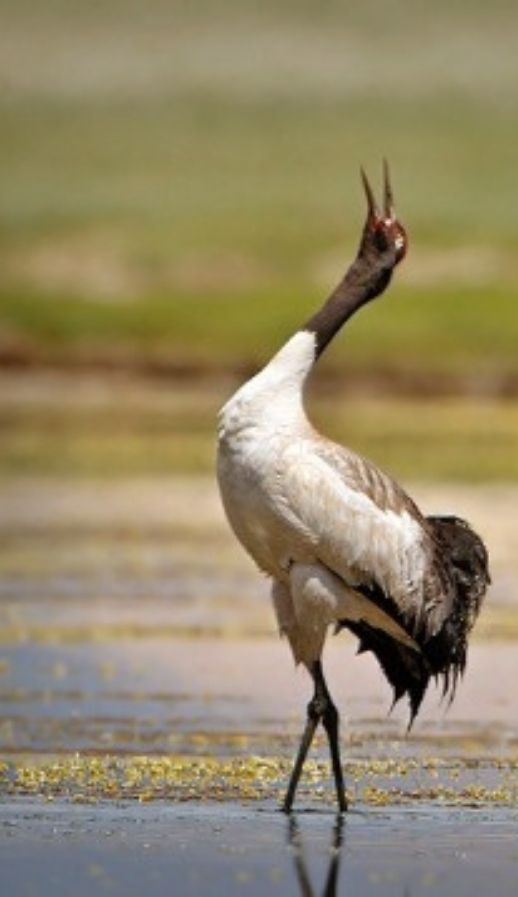
Ladakh
North India, the land of Ladakh, looks as though it was made for birdwatching and photography.

Gir National Park Gujarat
Sometimes it is not just the species spotted but also the amazing moments. Some of our guests had the unique opportunity to witness the mating of Asiatic Lions in the Gir Forest, truly a special moment.

Delhi
Surajpur is an amazing wetland close to the nation’s capital. Apart from being one of the monsoon homes for the Bristled Grassbird, it is also home to another sought-after species: the Bengal Bush Lark.

Rajasthan
One advantage of living near the birding hotspot of Bharatpur is that you can see some amazing birds, like the graceful Sarus Crane, in your backyard during this lockdown


